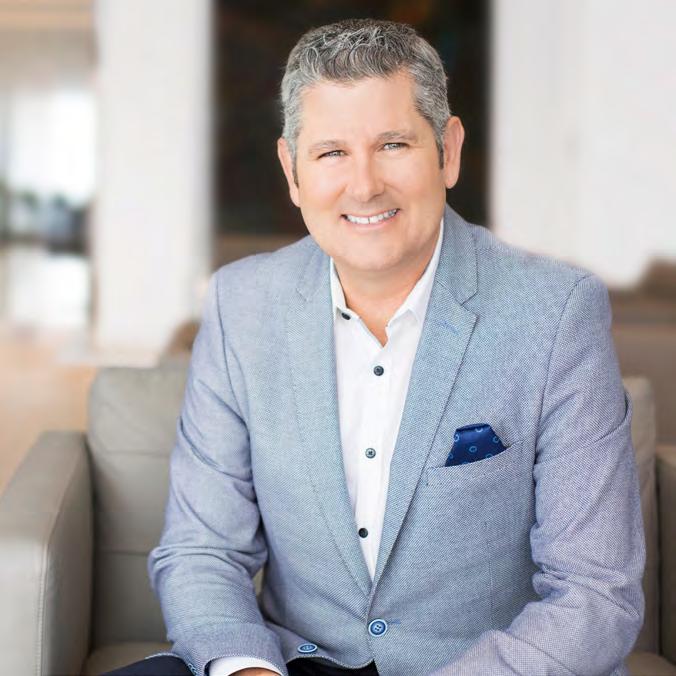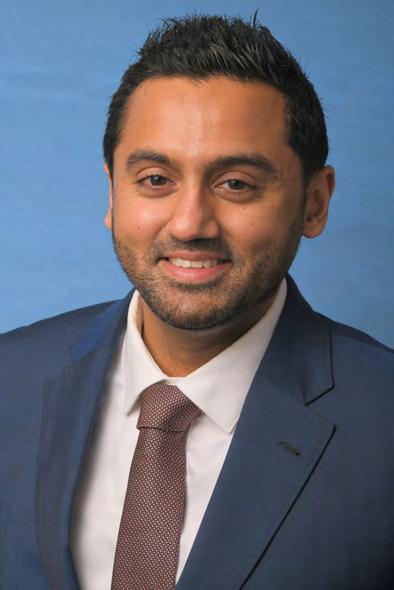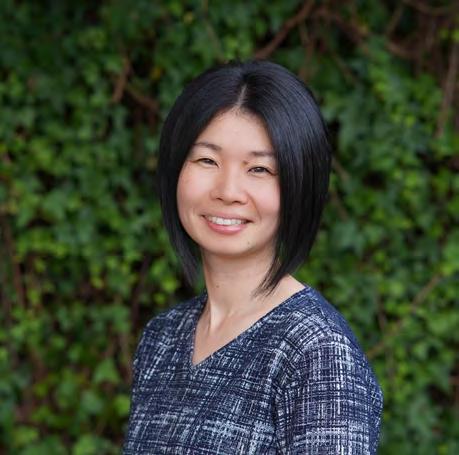INTERVIEWS WITH INNOVATORS AND ENTREPRENEURS AROUND THE WORLD

ISSUE 1
MESSAGE FROM THE EDITOR
Welcome to the inaugural edition of Horizon Search, a newsletter designed for the passionate, the curious, and the visionary. In today’s rapidly evolving world, the key to success lies in our ability to learn, grow, and adapt to change. Peek into the minds of thought leaders from diverse backgrounds and disciplines around the world to gain insights from CEOs, investors, professors, authors, and other trailblazers who are shaping the future of business.
Each edition of Horizon Search will feature in-depth conversations with esteemed guests, revealing their unique perspectives, challenges, and triumphs in the hopes of creating a vibrant community where ideas can flourish, connections can be made, and everyone can contribute to the collective growth of the global entrepreneurial ecosystem.
Thank you for joining this adventure as we strive to inspire, educate, and empower the next generation of global innovators. Here’s to a world of endless possibilities fueled by the power of human ingenuity and the relentless pursuit of progress.
Warm Regards,
David Lovejoy
Contents 5 Dami Lee | Accidental Entrepreneur 8 Martin Thibodeau | Leading Through Ambiguity 10 Jan Simon | Embracing Uncertainty 12 Ryan D’Souza | A Rising Star 14 Keiko Funahashi | Intercultural Leadership


“What you learn in school is not what you’re going to be working on in the
Dami Lee ARCHITECT + YOUTUBER damilee.com @damileearch -05 Horizon Search
field.”
Accidental Entrepreneur
Ina risk-averse field where conformity often takes precedence over innovation, one prodigious architect dared to break free from the constraints of a traditional path to follow her passion for visual storytelling. Meet Dami Lee, a licensed architect who started making YouTube videos during the pandemic—her channel has already gained over 600,000 subscribers and amassed over 31 million views. In this article, we delve into the bold path taken by this accidental entrepreneur, revealing the motivations and thought process behind her unusual career pivot and how it led to her working on her dream project.
According to Dami, transitioning from architecture to entrepreneurship can be challenging. There is no business training in six years of school, and the structure of firms can be stifling from a creativity standpoint. This disparity between academic learning and real-world practice can lead to disillusionment and disappointment.
Dami found inspiration from a YouTube channel called 30x40 by Eric Reinholdt, regarded as the first
YouTube architect. Between taking online finance and construction management classes, which she quickly realized she had no passion for, she also decided to try learning video editing and found an affinity for it. She was frustrated by how jargon stood as a barrier between the architect and the audience, so she was intent on using simple and engaging language to explain the concepts behind architecture. Her creative and polished videos quickly became popular. The passive income was significant enough to contemplate breaking off on her own, but still, she deliberated for six months, journaling and tracking data in spreadsheets.
“There are high-value and lowvalue skills in the firm. So I did a thorough analysis of how I was spending each hour, and 90% of my time was on low-value skills, which made the decision easier.”
Initially skeptical, her family has come around now that Dami has essentially leapfrogged the version of herself that might have stayed at the firm. Something unmentioned but evident in our conversation is that Dami is very honest with herself. When early editors would quit due to her perfectionism, a by-product of working in an unforgiving field, she acknowledged she had room to grow.
It shows.
For her master’s thesis, she designed a labyrinthine library in Venice stocked with the 30,000+ books in Umberto Eco’s collection. He (Eco) would say the book you need is not the one you seek but the one next to it or across from it. Dami envisioned visitors getting lost in books and having serendipitous encounters. Her belief that things happen for a reason informs her work and spills out into her life. After seeing a video documenting the year-long project, a client approached her with a dream offer to design a house on a steep slope in California. She explains that a home allows for greater attention to detail, honing in on the craft and that her design is a response to the information gathered from the environment rather than an imposition placed upon it.
Dami may have created a virtuous cycle with her YouTube channel by showcasing different aspects of her thinking and some of the “hidden” work architects do, all while bringing clients to her. In essence, being known for her mind rather than her buildings. In addition to Vols. 1 & 2 of Eric Reinholdt’s Architect and Entrepreneur, The 4-Hour Workweek by Tim Ferriss was an influential book for Dami, leading her to carve out her own niche by combining her existing skills with new skills. She encourages others to do the same if they find themselves unfulfilled on their current path.
There are no signposts for where she’s headed, but even by watching a single video, it’s easy to see there soon will be. Whether unpacking urban planning concepts from sci-fi films or breaking down the underlying psychology and architectural strategies behind potential Martian habitats, she shows viewers things they didn’t know they wanted to know. Each video is another stroke on the blueprint of her entrepreneurial journey, which has already garnered the admiration of many.
-07 Horizon Search
“The happiest moment was when I was doing my thesis…the research, the writing, the designing, the presenting, and the storytelling…I love visual storytelling.”
“I wouldn’t want people to recognize my buildings because they look a certain way, but rather by discovering them and spending time in them.”
Leading Through Ambiguity
Martin Thibodeau
REGIONAL PRESIDENT BRITISH COLUMBIA
RBC ROYAL BANK
Asthe Regional President of RBC in British Columbia, Martin Thibodeau is no stranger to making big decisions in an uncertain world. Responsible for overseeing the bank’s
operations in British Columbia, Thibodeau has developed a unique approach to decision-making that combines self-awareness, humility, and a deep understanding of the communities he serves.

A key part of Thibodeau’s strategy is gathering feedback from senior management and those on the ground. Upon arriving in British Columbia, he visited 170 branches in less than 10 months, speaking with hundreds of employees and local mayors to understand the business landscape. He says this direct, unfiltered feedback is crucial, as it often reveals issues that have been diluted or even masked when they reach his desk.
Thibodeau also looks to external sources for fresh perspectives, such as reading newsletters and listening to podcasts from John Stackhouse, a former Globe and Mail editor who joined RBC in 2014. By synthesizing these various sources of information, Thibodeau can make informed, confident decisions when allocating millions of dollars in investments.
Navigating the challenges of the pandemic has further tested Thibodeau’s leadership. To keep his 4,000 employees in British Columbia informed and engaged, he initiated weekly calls that mirrored the clear and constant communication provided by Dr. Bonnie Henry, BC’s provincial health officer. These calls have since been scaled back, but the focus on communication and transparency remains.
The pandemic also forced RBC to become more agile. In just 48 hours, 50% of employees transitioned to remote work—a feat that would have been unthinkable for the traditionally conservative bank. This rapid shift demonstrated that RBC could be both nimble and innovative when necessary, a valuable lesson that applies to all areas of the organization.
In making decisions, Thibodeau is mindful of the influence he wields. Taking a cue from Barack Obama, he often speaks last in meetings to avoid unduly shaping the conversation. This approach
extends to Listening Circles, confidential employee forums where Thibodeau can gather unfiltered feedback on various topics. These sessions have led to meaningful changes in RBC’s support for diverse employee groups and have fostered a greater sense of trust and engagement within the organization.
As a banker, Thibodeau must balance risks with openness to bold new ideas. To that end, the bank has established RBCx, a tech-focused division unlocking exciting new possibilities, particularly in “clean-tech”, where companies ‘wear capes’ and solve problems that will positively impact our planet.
Looking to the future, Thibodeau acknowledges the complexity and interconnectedness of today’s leaders’ challenges. From global conflicts and supply chain issues to environmental concerns and food security, leaders must grapple with seemingly insurmountable problems. However, Thibodeau remains optimistic, drawing on the resilience and ingenuity demonstrated during the pandemic as evidence of humanity’s ability to find solutions.
A key component of Thibodeau’s leadership style is giving back to the community financially and with his time. By leveraging social media platforms like LinkedIn, he raises awareness of important causes and champions RBC’s commitment to diversity, equity, and inclusion.
In an ever-changing world, Martin Thibodeau’s approach to leadership provides a blueprint for navigating uncertainty and fostering success. By staying grounded in humility, embracing diverse perspectives, and maintaining a focus on communication and community, Thibodeau is poised to lead RBC into a prosperous future.
-9 Horizon Search

Jan Simon Embracing Uncertainty MANAGING PARTNER | VONZEO CAPITAL PROFESSOR | IESE BUSINESS SCHOOL LECTURER | SIMON FRASER UNIVERSITY UC BERKELEY • OXFORD • CAMBRIDGE Author of Search Funds & Entrepreneurial Acquisitions: The Roadmap for Buying a Business and Leading it to the Next Level
Asa young man with an adventurous spirit and a strong role model in his grandfather, Jan Simon embarked on a career in the special forces. There, he learned the value of discipline, duty, and resilience, facing challenges such as parachuting from a Hercules aircraft and making quick decisions in high-stress situations. These experiences shaped his understanding of leadership and instilled the belief that it is crucial to focus on the journey after the jump rather than the jump itself.
As a veteran business executive, Jan believes that CEOs must be purpose-driven leaders and transition from being diplomats and experts to achievers who propel the entire organization forward rather than concentrating on specific domains. Such leaders are more inclined to make decisions that benefit stakeholders, employees, and customers alike.
Addressing decision-making under uncertainty, Jan recalls advice Jamie Dimon gave him about differentiating between good and bad mistakes. Good mistakes arise when leaders have done their due diligence, prepared for potential outcomes, and absorbed the lessons from the experience. Conversely, bad mistakes result from insufficient preparation and consideration.
Referencing the work of Michael Tushman of Harvard and Charles O’Reilly of Stanford, Jan underscores the importance of balancing exploration and exploitation within organizations. He points to industry giants like Apple, Google, and Netflix as prime examples of companies that have successfully achieved this balance. The challenge is to find the right combination of resources and strategies for both innovation and efficiency.
faced various challenges but has emerged stronger, as evidenced by its share price. A willingness to put one’s ego aside is crucial for fostering collaboration, personal growth and a more rewarding journey.
In academia, the pursuit of knowledge is valued above immediate financial gain, making it an ideal environment for intellectual growth and innovation. The Search Fund model, which began at Harvard and later moved to Stanford, is an excellent example of how academia can foster acquisition entrepreneurship and create longlasting, meaningful initiatives.
In the coming years, the growth potential for Entrepreneurship Through Acquisition (ETA) lies in the largely untapped Asian market. With countries such as Vietnam, South Korea, Japan, China, and India entering the fray, there is immense potential for growth and expansion. The unique business cultures within these countries will also influence how the Search Fund model evolves.
Another aspect that deserves attention is the career path of CEOs within the Search Fund model. Traditionally, individuals who join large companies like Procter & Gamble may work their way up to the position of CEO over several decades. However, within the ETA model, entrepreneurs have the opportunity to become CEOs of smaller companies from an early stage in their careers. The challenge lies in nurturing these CEOs as they grow with their companies, similar to how sports coaches progress from junior teams to professional leagues. Encouraging this progression will contribute to the development of a new generation of experienced and capable CEOs who have honed their skills through a career of growth and learning.
Today’s dynamic business landscape demands adaptation from companies. Meta, for instance, has
Jan believes ETA may be the road to that.
Horizon Search -11
A Rising Star
Arecent Business in Vancouver Forty Under 40 winner and an inspiring figure in the automotive industry, Ryan D’Souza discusses his career trajectory, the lessons he’s learned along the way, and the importance of mentorship in personal and professional growth.

From Humble Beginnings to Success
Ryan’s journey began with an eight-year stint in Guest Services at Fairmont, where he worked his way through university. This formative experience taught him the importance of understanding people and the value of exceptional customer service. After a brief period at EMKAY, he moved to JP Lease and began climbing the ranks, largely due to the company’s entrepreneurial spirit and the opportunities it presented for growth and innovation.
Ryan D’Souza PRESIDENT
JIM PATTISON LEASE
At JP Lease, Ryan found an environment where hard work, dedication, and intelligence were recognized and rewarded. The company offered him challenges early in his tenure and encouraged him to run with his ideas, allowing him to add and expand verticals within the organization. Ryan also benefited from having supportive mentors who helped him navigate the industry and refine his skills.
The Power of Peer Groups and Mentorship
During his time at JP Lease, Ryan discovered MacKay CEO Forums through a referral from a former president. MacKay CEO Forums provided him with a sounding board for shared experiences, advice, and personal development. As Ryan points out, “What got you here won’t get you there,” emphasizing the importance of learning and evolving with your business.
Ryan firmly believes in the power of mentorship and its ability to give back to the community. He has been actively involved in structured mentorship programs through organizations like the Greater Vancouver Board of Trade and in universities, where he shares his experiences and insights with the next generation of industry leaders.
A Passion for Cars and Taking Calculated Risks
Beyond his professional achievements, Ryan has always been a car enthusiast. He has attended the BMW racing school and hit the track several times, fueling his dream of racing cars. This passion for the automotive industry translates into his willingness to take calculated risks in his work.
One such risk is investing in the electric vehicle market, despite its current challenges and limited product availability. Ryan recognizes the importance of sustainability in the automotive industry and believes that early investment in electric vehicles is crucial for the future of the planet. This forwardthinking mindset sets him apart as a leader in the
industry.
The Future: Growth, Legacy, and Culture
Looking ahead, Ryan has ambitious plans for his future with JP Lease, both domestically and in the US market. As a leader within a well-funded and nimble organization, he aims to continue growing the company organically while acquiring products and services that would be too difficult to develop internally.
A key aspect of this growth strategy is preserving the strong culture and values that have shaped JP Lease for over 62 years. Ryan understands the importance of staying true to the company’s roots while embracing change and innovation. He is committed to making thoughtful decisions regarding expansion, whether that involves entering new markets, acquiring complementary products or services, or strengthening the team.
In conclusion, Ryan D’Souza’s journey from Manager to President of JP Lease in ten years is a testament to hard work, resilience, and the importance of mentorship. His dedication to personal and professional growth and his passion for the automotive industry make him an inspiring figure for aspiring entrepreneurs and industry professionals alike. We look forward to witnessing his continued success in the years to come.
-13 Horizon Search
Intercultural Leadership
DIRECTOR OF DEVELOPMENT
Keiko Funahashi
NIKKEI PLACE FOUNDATION

Theimportance of intercultural leadership in today’s globalized society cannot be overstated. Effective leaders foster strong relationships with colleagues, partnering organizations, and the community at large.
Keiko Funahashi, the Director of Development at the Nikkei Place Foundation, exemplifies these qualities, skillfully navigating cultural differences within her organization and beyond.
At the recent annual Building Organizational and Sector Sustainability (BOSS) Conference by Vantage Point, Keiko had the opportunity to present her experiences in a session titled “Inside a BIPOC-Led Nonprofit Organization.” The presentation focused on her journey as a Japanese Canadian, leading a charity called Tonari Gumi and working with the Japanese Canadian community.
Navigating the cultural complexities of being both a minority and part of the dominant culture in different settings has been a humbling experience for Keiko, teaching her the importance of selfawareness, sensitivity, and effective communication to foster a more inclusive working environment.
One of the key takeaways from her presentation was the realization that cultural differences in the workplace are not only about food, religion, or customs but also about work styles and preferences. For example, the Japanese approach to decisionmaking and planning tends to be more deliberate and thorough, while the Canadian approach is more flexible and adaptive.
To navigate these differences effectively, Keiko had to become more self-aware and reflective of her own cultural assumptions. This awareness enabled Keiko to initiate conversations with her colleagues and find a middle ground that respected everyone’s preferences and work styles. A valuable resource that helped her in this process was “The Culture Map” by Erin Meyer, which provided insights into the subtle differences in work culture between countries.
It is essential to recognize that cultural assumptions can be both visible and “sneaky.” Visible cultural differences, like shaking hands or bowing, can be easily adopted. However, the more subtle cultural nuances in the workplace require deeper understanding, reflection, and communication. It is about finding a balance that allows for peaceful coexistence and collaboration, with everyone working towards common goals.
The Japanese Canadian community’s diversity offers unique challenges and opportunities for intercultural leadership. By embracing differences and fostering understanding, leaders like Keiko can harness the power of diversity to improve organizational performance.
The Nikkei Place Foundation serves as an exemplary model of an organization that embodies this. As it continues to bridge cultural gaps and promote understanding through various programs, the foundation is poised to make an even more significant impact on communities near and far.
Horizon Search -15

FOLLOW
SUBSCRIBE
For questions, comments, and introductions to people doing interesting things, please send a message to: info@horizonsearch.co
Photo credit
Cover: Gabriele Zocchi/Scopio - stock.adobe.com
Page 4: torsakarin - stock.adobe.com
This page: AlenKadr - stock.adobe.com

Back cover: Paitoon - stock.adobe.com



LEADERSHIP • CHANGE • GROWTH












